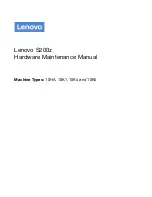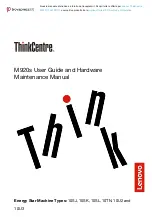
With the addition of special devices such as function generator and function m ultiplier, addi
tional operations may be perform ed such as m ultiplication of variables, computation of trig
onom etric, exponentional and logarithm ic functions and generation of discontinuous functions. *
THEORY
In ord er to solve differential equations on an analog computer, it is necessary to have:
1. DC am plifiers (also called operational am plifiers)
capable of perform ing the operation
of
a. Integration
b. Addition (or summation)
c. Multiplication by a constant
d. M ultiplication by -l(in v e rsio n )
2. A means o f setting coefficien ts in a problem . This may be done by means of
a. Potentiom eters
b. Changing the ratio of feedback resistan ce to input resistance.
3.
A control system for starting and stopping solution
o f the problem , as well as resetting
the initial conditions
so as to be ready for running
a new solution with the same or new
coefficien ts and initial conditions.
The general procedure in solving a problem is to:
1. Set the machine variables (voltages) to the c o r re c t initial conditions.
2. Make the computing elem ents operative and fo rce the voltages to vary in the manner
p rescrib ed by the differential equations.
3. Observe a n d /or re co rd the voltage variations, with resp ect to time, which constitute
the solution of the given problem .
4. Stop the machine and reset for a new run.
The heart of the analog computer is the DC operational am plifier which perform s the basic
mathematical operations n ecessary for the solution of problem s.
The am plifier used in the analog computer is a high gain direct-cou p led am plifier with negative
feedback and is represented by a triangle with the base at the input end and the apex at the out
put end, as shown in Figure 1.
INPUT O -
-O
OUTPUT
Figure 1
AM PLIFIER SYMBOL
* Clarence L. Johnson, ANALOG COMPUTER TECHNIQUES (M cGraw-Hill Book Company,
I n c ., New Y ork 1956) Chapter 8, Pages 136-164.
Korn and Korn, ELECTRONIC ANALOG COMPUTERS (M cGraw-Hill Book Company, I n c .,
New Y ork 1956) Second Edition, Chapter 6, Pages 251-344.
Page 4







































